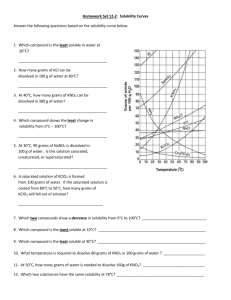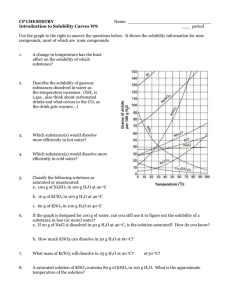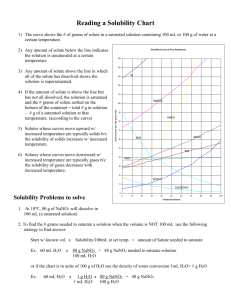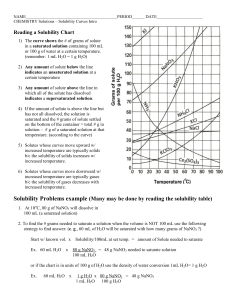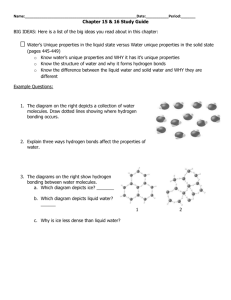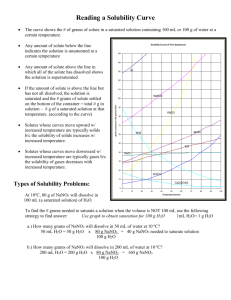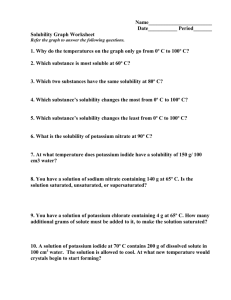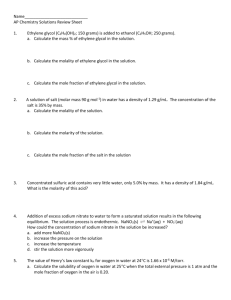CP Reading Solubility Charts
advertisement
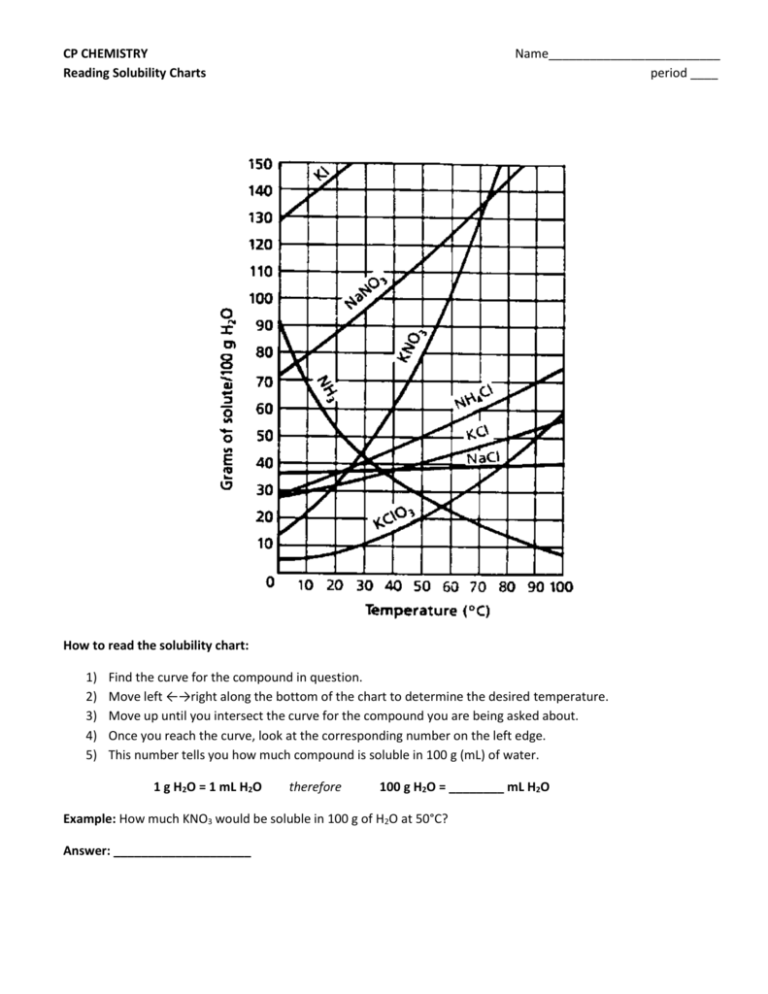
CP CHEMISTRY Reading Solubility Charts Name_________________________ period ____ How to read the solubility chart: 1) 2) 3) 4) 5) Find the curve for the compound in question. Move left ←→right along the bottom of the chart to determine the desired temperature. Move up until you intersect the curve for the compound you are being asked about. Once you reach the curve, look at the corresponding number on the left edge. This number tells you how much compound is soluble in 100 g (mL) of water. 1 g H2O = 1 mL H2O therefore 100 g H2O = ________ mL H2O Example: How much KNO3 would be soluble in 100 g of H2O at 50°C? Answer: ____________________ CP CHEMISTRY Name: ____________________________________ Solubility Curves Worksheet I ____ period 1. Using a solubility curve, determine the amount of each solute that can dissolve in 100g of water at the given temperature (a) KNO3 at 70°C (b) NH4Cl at 90°C (c) NaCl at 100°C (d) NaNO3 at 35°C (e) NH3 at 20°C (f) KClO3 at 65°C (g) NH4Cl at 65°C (h) NaNO3 at 70°C (i) KNO3 at 10°C (j) Ce2(SO4)3 at 15ºC 2. Solubility data for four different salts in water at 60 oC are shown in the table below. Salt Solubility in Water at 60 ºC A 10 g/50 g H2O B 20 g/60 g H2O C 30 /120 g H2O D 40 g/80 g H2O Which salt is most soluble at 60 oC? 3. When cola, a type of soda pop, is manufactured, CO2 (g) is dissolved in it. (a) A capped bottle of cola contains CO2 (g) under high pressure. When the cap is removed, how does pressure affect the solubility of the dissolved CO2 (g)? (b) A glass of cold cola is left to stand 5 minutes at room temperature. How does temperature affect the solubility of the CO2 (g)? 4. A student uses 200 grams of water at a temperature of 60°C to prepare a saturated solution of potassium chloride, KCl. (a) Identify the solute in this solution. (b) How many grams of KCl must be used to create this saturated solution? (c) This solution is cooled to 10°C and the excess KCl precipitates (settles out). The resulting solution is saturated at 10°C. How many grams of KCl precipitated out of the original solution? 5. The following data table shows the solubility of a solid solute. Graph the data from the data table. Connect the points. Temperature (ºC) Solute/100 g of H2O 0 18 20 20 40 24 60 29 80 39 100 49 (a) Based on the data table, if 15 grams of solute is dissolved in 100 grams of water at 40°C, how many more grams of solute can be dissolved in this solution to make it saturated at 40°C? (b) Using the solubility curve on the first page, how many grams of KClO3 must be dissolved in 100 grams of H2O at 10°C to produce a saturated solution? 6. A saturated solution of NaNO3 is prepared at 60°C using 100 grams of water. As this solution is cooled to 10°C, NaNO3 precipitates (settles) out of the solution. The resulting solution is saturated. Approximately how many grams of NaNO3 settled out of the original solution? (Use the solubility curve on the first page.) 7. An unsaturated aqueous solution of NH3 is at 90 °C in 100 grams of water. How many grams of NH3 could this unsaturated solution contain? (Use the solubility curve on the first page.) 8. Using the solubility curve on the first page, determine whether the following solutions would be saturated, unsaturated, or supersaturated. a) 120 g NaNO3 at 50oC b) 40 g NaCl at 90oC c) 10 g KNO3 at 30oC d) 50 g NH4Cl at 30oC e) 80 g KNO3 at 50oC f) 70 g NH4Cl at 90oC

